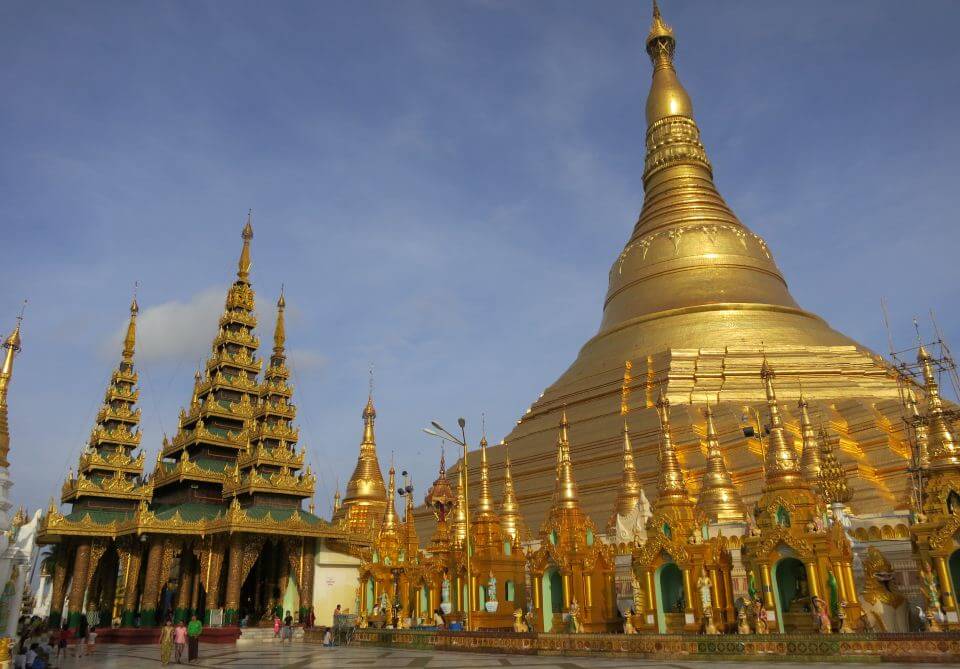
Shwedagon Pagoda in the sunlight
I grew up near Rudyard Kipling’s house in southern England, and the first time I heard of the Shwedagon Pagoda was as a child, reading one of his travel books:
Then, a golden mystery upheaved itself on the horizon, a beautiful winking wonder that blazed in the sun, of a shape that was neither Muslim dome nor Hindu temple-spire. It stood upon a green knoll, and below it were lines of warehouses, sheds, and mills. Under what new god, thought I, are we irrepressible English sitting now?
-Rudyard Kipling
Since then it was always rather an unlikely dream to visit the Shwedagon Pagoda in what was at that time still called Burma.
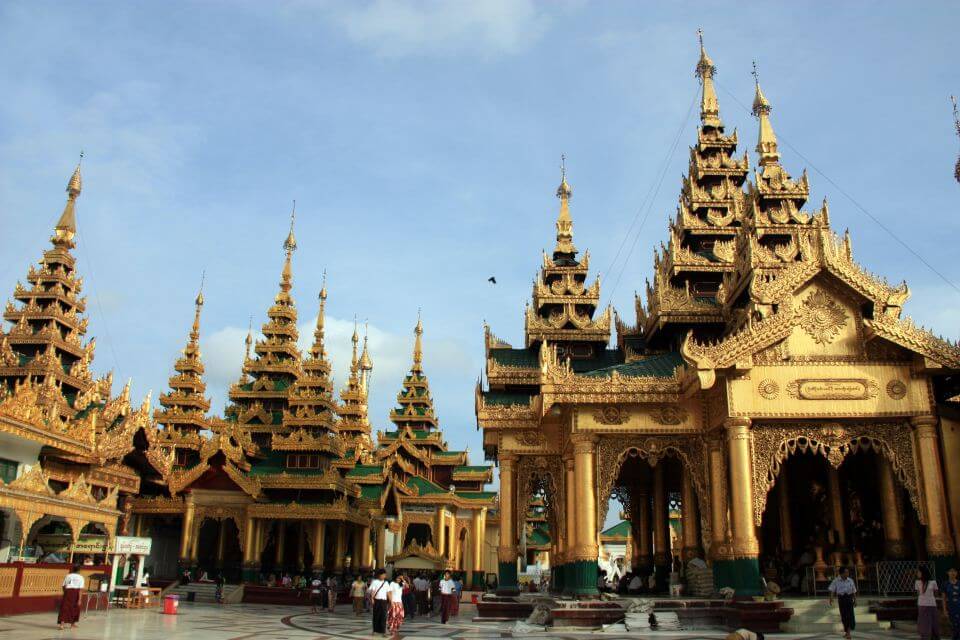
There’s some debate about how old the temple complex is, but the official guide states that it was started in 588BC as a shrine to eight of the Buddha’s hairs. The original stupa was 8 metres tall, but the regular addition of extra layers has increased this height to nearly 110m.
It now contains a number of additional relics (a staff, a robe and a water filter) and is the most sacred pagoda in Myanmar.
The whole structure is covered in gold plate and topped with 4531 diamonds, the largest of which is 72 carat.
The surrounding buildings, temples and stupas are an incongruous mix of fine wood carving, gold plate and cheap green plastic roofing.
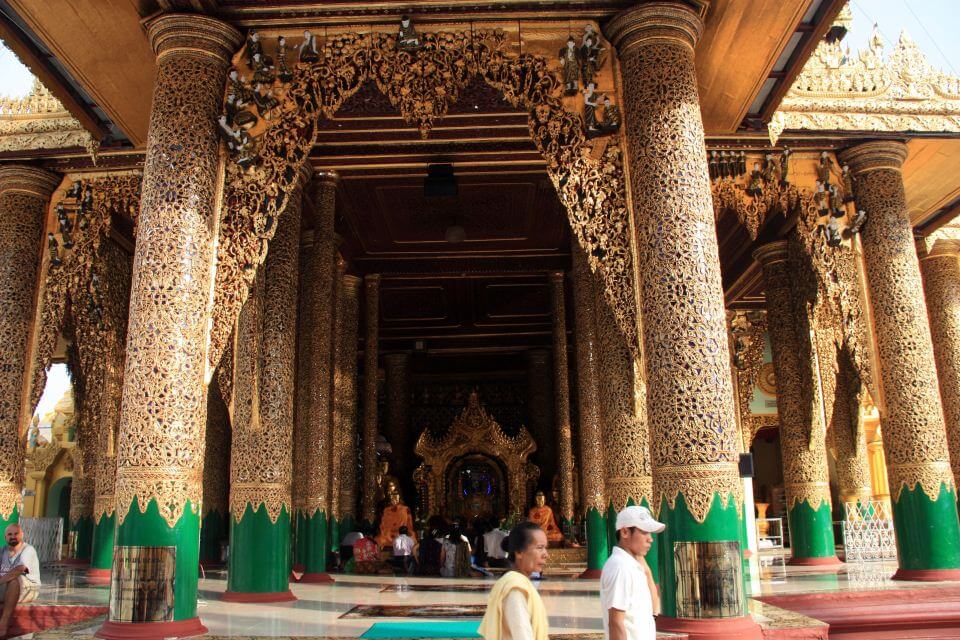
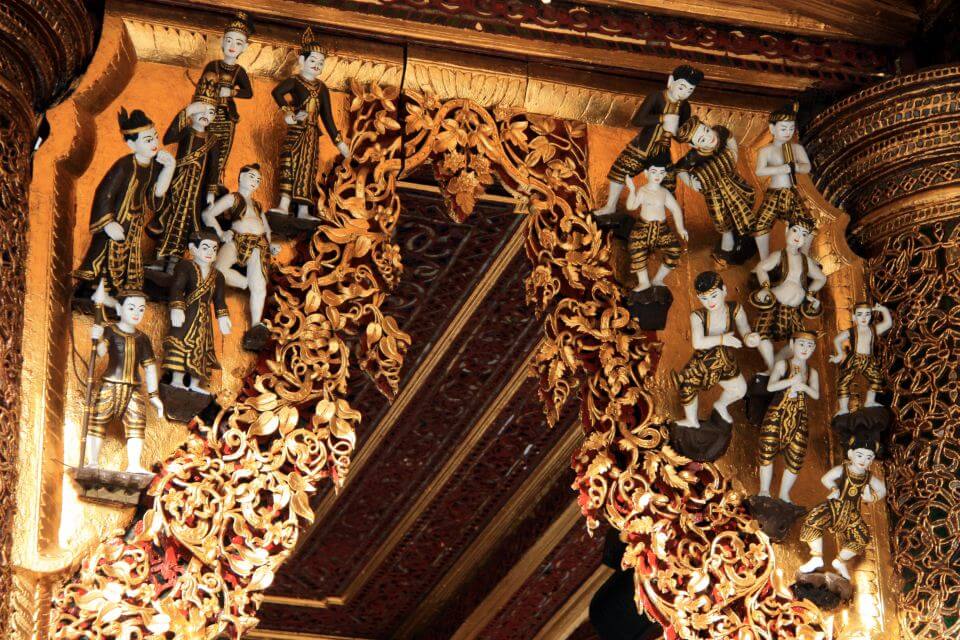
Visitor Tips for the Shwedagon Pagoda
The Shwedagon Pagoda sits atop Singuttara Hill, at the edge of Kandagawi Lake, and is visible from much of the town.
Dress code: No shoes. Clothing should cover knees and elbows.
Entrance fee is $5. There are 4 entrances, each with a special gate for foreigners. Don’t forget to leave by the same exit, otherwise bring a bag for your shoes. Carrying them openly is not appreciated.
The light is best in the morning, but the early evening is far more interesting as this is when the area is swept by waves of broom wielding workers, which seems to be more of a social event than a chore.
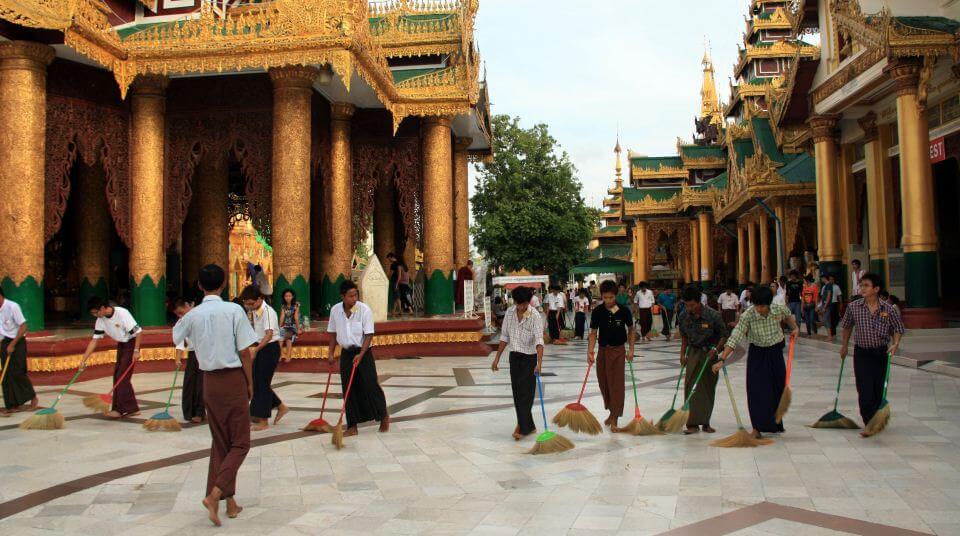
Sweeping the floors at around 6pm. The sweepers pass in waves of either men or women
There’s a huge influx of visitors around 6pm, when the lights start coming on, so get there a little earlier if you want to observe the planetary rituals based on your day of birth.
The full text of From Sea to Sea, including Rudyard Kipling’s description of the Shwedagon Pagoda in 1889
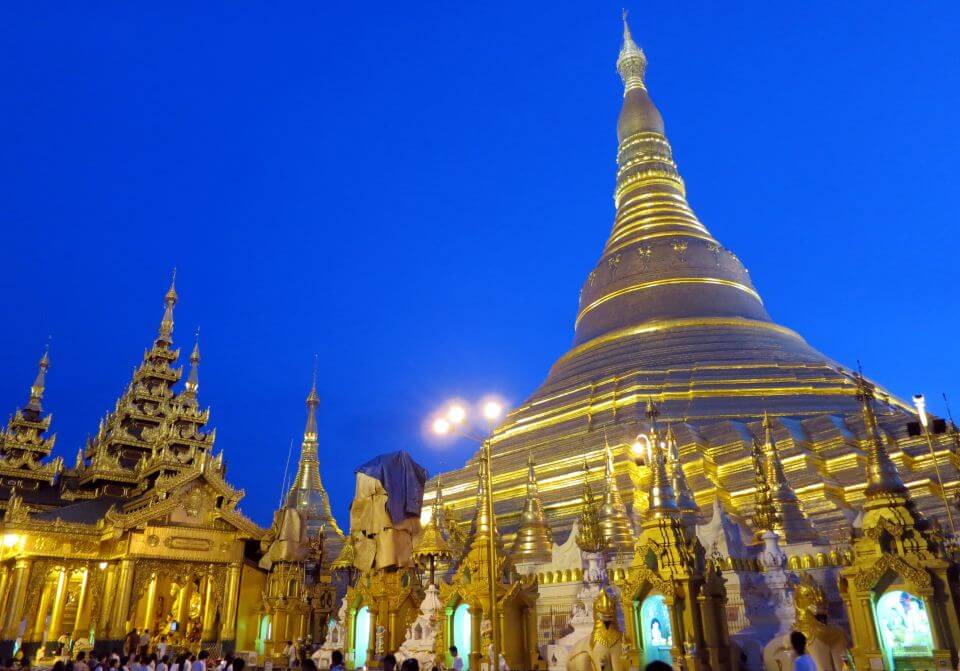
Shwedagon Pagoda after sunset – the sky stayed blue for about 90 minutes

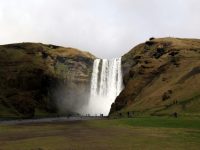
Pingback: (@baseballmh) (@baseballmh)
Pingback: (@wesaidgotravel) (@wesaidgotravel)
Pingback: (@RemoteLands) (@RemoteLands)
Pingback: Alexandra Pucherelli (@MasterFrolicker)
Pingback: Backyard Travel (@Backyard_Travel)
Pingback: (@WanderingEds) (@WanderingEds)
Pingback: @pen4hire
Pingback: @sattvicfamily
I have always wanted to visit Myanmar… I think it will be a priority next time I go to Asia
Pingback: @crorysoutdoor
That last photo is really gorgeous with the blue background. Great shot!
Pingback: @DonNadeau
Beautiful photos!
Pingback: @SandraFoyt
Beautiful shots! All I know of Myanmar is delicious Burmese food but it looks like a fascinating place to visit!
It is a new favourite of mine – each day just got better and beter
Pingback: @1step2theleft
Brilliant photos! Looks like quite the amazing place to visit, will certainly keep it in mind.
These are some beautiful photos of Myanmar. That blue sky is absolutely stunning!
Pingback: @GreenGlobalTrvl